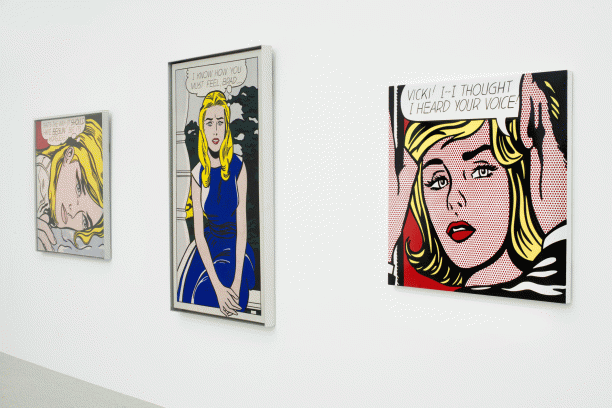Ludwig Goes Pop
12 Feb - 13 Sep 2015
LUDWIG GOES POP
12 February - 13 September 2015
Curated by Susanne Neuburger
From February 2015, mumok is presenting on four levels one of the world’s most significant holdings of Pop Art—the collection of the German industrialists Peter and Irene Ludwig. In this extensive overview, around 100 works from six different institutions associated with the Ludwigs will be brought together. Exhibits from the Museum Ludwig Cologne, the Ludwig Forum for International Art, Aachen, the Ludwig Museum in the Deutschherrenhaus Koblenz, the Kunstmuseum Basel, the Ludwig Múzeum in Budapest, and mumok will be on show in Vienna to September 2015.
Pop Art was quicker than any other art movement of the twentieth century to gain entrance to art markets, and was widely exhibited and enthusiastically received as soon as it began to emerge on the scene in the USA. Peter and Irene Ludwig began to discover American Pop artists in the mid-1960s, when this movement was still largely unknown in Germany. It was only with presentations at the 1964 Biennale di Venezia and documenta 4 (1968) in Kassel that Pop Art was presented to a broader European audience.
The Ludwigs were interested in those artists who are today seen as the legendary protagonists of Pop Art: Robert Indiana, Jasper Johns, Roy Lichtenstein, Claes Oldenburg, Robert Rauschenberg, James Rosenquist, and Andy Warhol. Their early sense for the significance of these works led to the largest Pop Art collection outside the USA.
For the Ludwig Goes Pop exhibition at mumok in 2015, the Ludwig collection will be brought together from its various homes in European museums for the first time and thus be seen as a whole. Books, records, and films of the time will complement the exhibition and place the works within a larger social context.
Ludwig Goes Pop will be accompanied by a parallel mumok exhibition of the work of David Lieske, and based on Lieske’s suggestion, the British Villa Design Group will comment on Pop Art from today’s perspective. On Level 3 of the museum, they will set up their Bernard Natan Centre for the Arts, with a direct view of Claes Oldenburg’s Mouse Museum (1960–1977) and Ray Gun Wing (1961–1977), pursuing a museum master plan that is just as spectacular as Oldenburg’s major works.
12 February - 13 September 2015
Curated by Susanne Neuburger
From February 2015, mumok is presenting on four levels one of the world’s most significant holdings of Pop Art—the collection of the German industrialists Peter and Irene Ludwig. In this extensive overview, around 100 works from six different institutions associated with the Ludwigs will be brought together. Exhibits from the Museum Ludwig Cologne, the Ludwig Forum for International Art, Aachen, the Ludwig Museum in the Deutschherrenhaus Koblenz, the Kunstmuseum Basel, the Ludwig Múzeum in Budapest, and mumok will be on show in Vienna to September 2015.
Pop Art was quicker than any other art movement of the twentieth century to gain entrance to art markets, and was widely exhibited and enthusiastically received as soon as it began to emerge on the scene in the USA. Peter and Irene Ludwig began to discover American Pop artists in the mid-1960s, when this movement was still largely unknown in Germany. It was only with presentations at the 1964 Biennale di Venezia and documenta 4 (1968) in Kassel that Pop Art was presented to a broader European audience.
The Ludwigs were interested in those artists who are today seen as the legendary protagonists of Pop Art: Robert Indiana, Jasper Johns, Roy Lichtenstein, Claes Oldenburg, Robert Rauschenberg, James Rosenquist, and Andy Warhol. Their early sense for the significance of these works led to the largest Pop Art collection outside the USA.
For the Ludwig Goes Pop exhibition at mumok in 2015, the Ludwig collection will be brought together from its various homes in European museums for the first time and thus be seen as a whole. Books, records, and films of the time will complement the exhibition and place the works within a larger social context.
Ludwig Goes Pop will be accompanied by a parallel mumok exhibition of the work of David Lieske, and based on Lieske’s suggestion, the British Villa Design Group will comment on Pop Art from today’s perspective. On Level 3 of the museum, they will set up their Bernard Natan Centre for the Arts, with a direct view of Claes Oldenburg’s Mouse Museum (1960–1977) and Ray Gun Wing (1961–1977), pursuing a museum master plan that is just as spectacular as Oldenburg’s major works.

